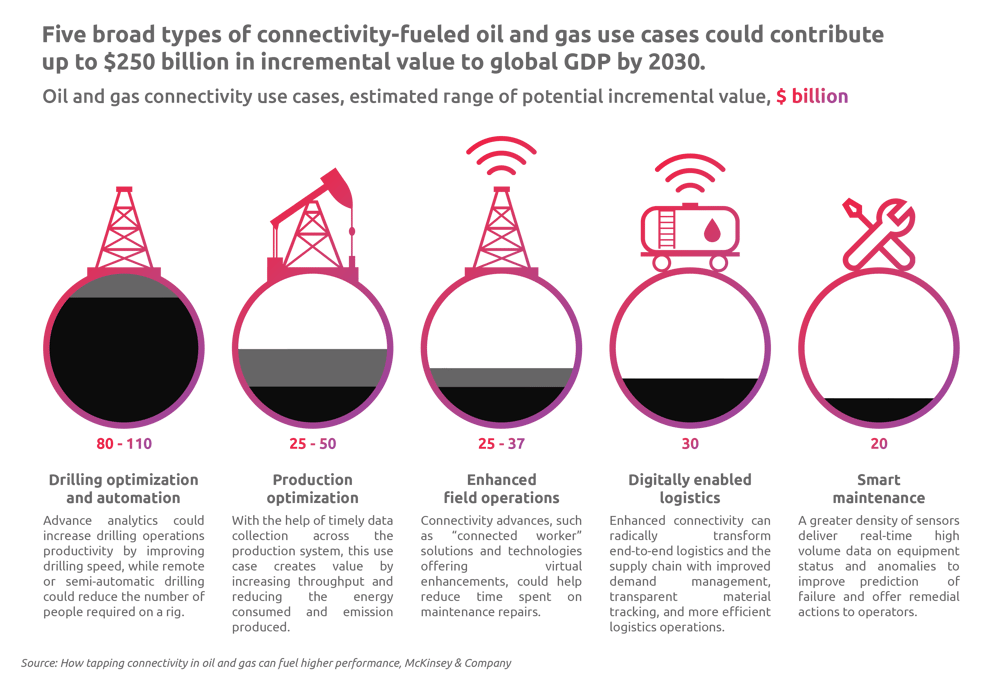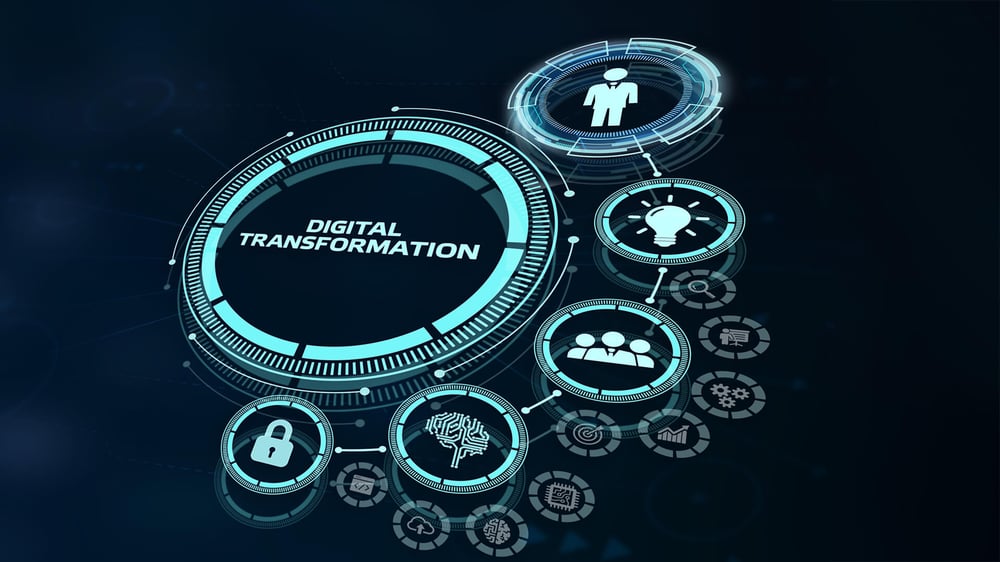Bridging the gap between legacy systems and digital innovation
In today's world, integrating new innovative solutions with already existing but aging systems enables digital transformation without disruptions to operations.
Digital disruption is quickly reshaping industries, yet many oil and gas companies remain stuck in the past, weighed down by legacy IT systems. Strategic upgrades to the digital environment are now a necessity for survival and competitiveness.
Outdated technology and off-the-shelf solutions don’t truly capitalize on innovations in artificial intelligence (AI), IoT platforms, mobility, cloud computing, etc.
In this article, we'll discuss the benefits of modern technologies, factors to consider before upgrading your system, and the cost and risk of having technical debt.
What is technical debt?
Technical debt refers to the long-term cost of choosing quick & convenient short-term solutions instead of using a more beneficial approach that may take longer.
Typically, balancing some technical debt by delivering business value is reasonable, but uncontrolled debt accumulating over time leads to diminishing returns and eventual work paralysis.
Understanding legacy software and their challenges in a digital future
Cumbersome legacy systems based on outdated technologies pose several challenges and limitations. One of the primary concerns is the lack of compatibility with new solutions, which hinders existing equipment integration and impedes industry competitiveness.
Furthermore, legacy technology often results in higher costs for business processes. Outdated systems' lower productivity and efficiency can harm the company's bottom line. Additionally, finding qualified personnel proficient in older software languages, scope, and specifications can be difficult.
Moreover, the inflexibility of legacy solutions poses a significant challenge when scaling and growing the business. The limited adaptability of outdated technologies restricts the organization's ability to meet evolving market demands and seize business opportunities.
The benefits of digital innovation
The pandemic has shown the importance of moving with the times - even in the oil & gas industry.
(Do check out this survey among respondents in the oil and gas industry that revealed the areas and the extent to which they are susceptible to change.)
System modernization can bring several benefits to your organization. It enhances agility by enabling the adoption of new technologies and applications that were previously not feasible due to issues with legacy solutions. Moreover, this process keeps the system compliant with the latest security requirements and protects it from potential vulnerabilities.
Furthermore, application modernization improves productivity through automation, streamlined processes, and reduced system downtime. This results in cost savings, as manual work is minimized and the system operates more smoothly.
A recent McKinsey survey shows that the financial potential for the use of new solutions in the industry is enormous:

In addition, modern systems keep providing a better user experience for employees and customers. The use of better interfaces and user-friendly features enhances accessibility while reducing complexity. And finally, it allows for more accurate data management through improved integration with external systems. It enables organizations to leverage real-time data analytics, leading to improved decision-making abilities and providing valuable insights for the business.
Factors to consider before digital transformation
Before embarking on the journey of technology advances and implementing a new functionality of the application, several factors must be considered. It's essential to assess the legacy system's current state and identify improvement areas. This includes evaluating its functionality, performance, security measures, and scalability.
Preparing for system evolution involves upgrading technology and training employees to use the new and better capabilities offered by the new architecture. This requires a comprehensive change management plan that addresses the needs of all people involved in using or maintaining the legacy application.
Some new systems may be hybrid, combining elements of different architectures, while others may simply migrate data from one application to another. However, in some cases, rebuilding the current infrastructure may be necessary to meet the needs of today's business models and achieve the desired external behaviour.
Choosing the best approach depends on the problem and many factors, including cost-effectiveness, ease of implementation, and compatibility with existing IT infrastructure, so it's worth having a professional team to advise you on the best solutions.
How to modernize legacy systems
Preparing for the transformation of legacy systems isn't just about the application component; it's also about embracing a new mindset. It requires businesses to be agile, flexible, and open to change.
One of the critical steps in preparing for transformation is identifying your business goals. What are you hoping to achieve? Are you looking to improve operational efficiency or enhance customer experience? This will make it easier for you to choose the modernization approach.
And what modernization options are available?
- New application program or new runtime platform
This option requires considering the long-term operation and maintenance of the new application architecture. As technology continues to evolve, ensuring that the chosen solution can adapt to future advancements is essential. Additionally, ongoing support and updates will be necessary to keep the application running smoothly and securely.
- Using cloud solutions for high-volume data processing
Cloud solutions offer data storage and processing scalability, flexibility, and cost-efficiency. Migrating your data to the cloud can enable easier access, enhanced security, and improved data management capabilities, supporting your efforts to optimize operations such as high-volume data. By leveraging virtual or cloud infrastructure, you can ensure that your core business operations remain in use without the limitations of traditional on-premises infrastructure.
- Changes in features or functions
In some cases, a transformation may involve making minimal changes to existing code or functions of your applications or systems. This approach focuses on optimizing the current solution rather than completely replacing it. It can be a cost-effective option when the existing system meets most of your requirements and the primary goal is to enhance specific aspects.
- Adopting an API-driven approach
An Application Programming Interface-driven approach involves building your core business logic and architecture around APIs. These enable seamless integration and interaction between applications, systems, and services. Adopting it allows you to leverage power to enhance your initiatives' interoperability, scalability, and flexibility. Additionally, incorporating specific APIs can further improve the functionality of your business.
For example, a maps API can provide geolocation services, enabling location-based functionalities within your applications. This integration can offer features like geocoding, geolocation, route planning, and more.
Or you could integrate generative AI solutions using APIs, powering analytical functions, automating a lot of the routine and mundane tasks, while ensuring the safety and security of your proprietary data.
Wrapping up
Bridging the gap between legacy systems and digital innovation is crucial for oil and gas organizations to thrive in today's rapidly evolving technological landscape.
Legacy systems often have outdated technologies and lack interoperability, hindering the adoption of new digital solutions.
By bridging this gap, businesses can leverage the benefits of digital innovation, such as improved efficiency, enhanced customer experiences, and the ability to harness data-driven insights while maximizing their existing investments in legacy systems.
This integration enables a seamless transition towards modernization, empowering oil and gas companies to stay competitive and adapt to changing market demands.
Share this
You May Also Like
These Related Stories

Building a future-ready enterprise: The journey to digital transformation

The cost of not innovating in an era of digital transformation
